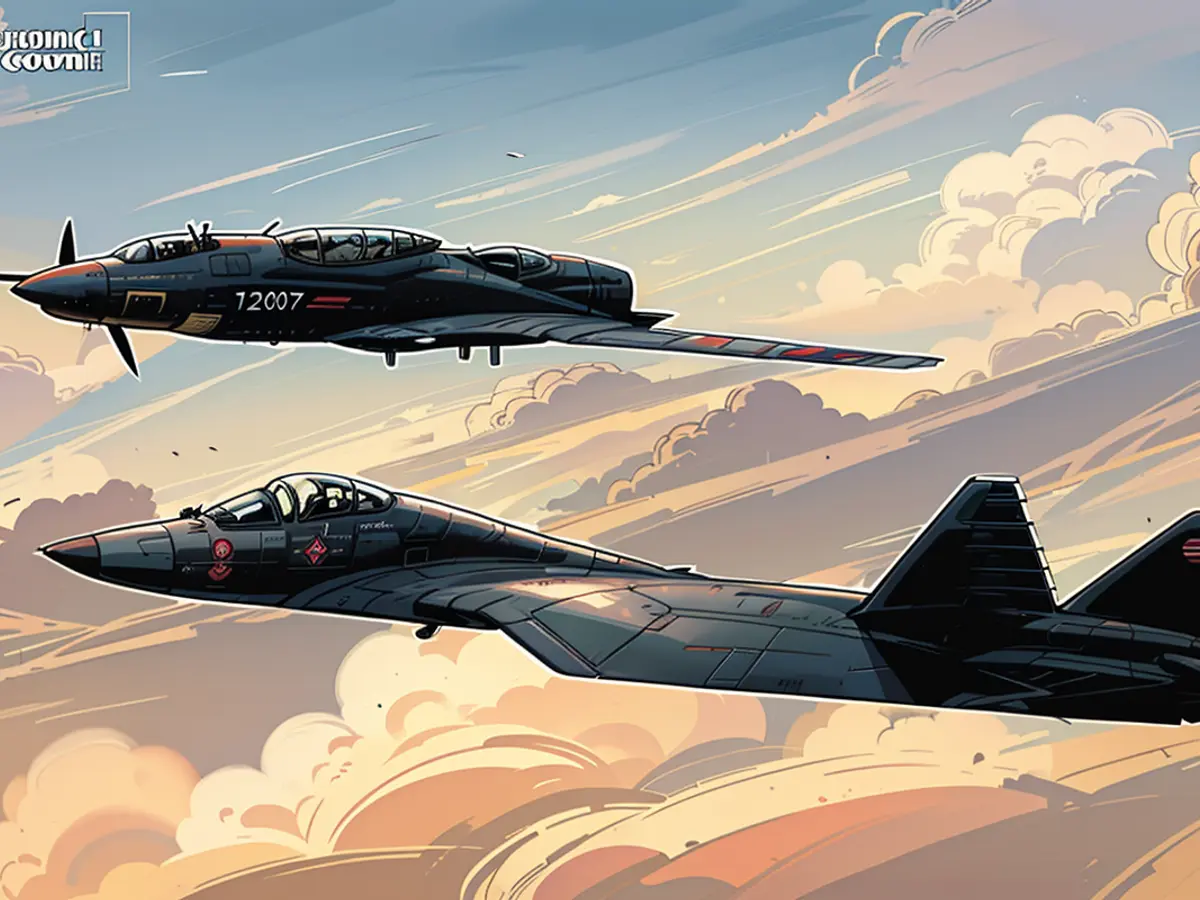Fresh insights emerge concerning the destruction of the massive Russian S-70 drone
Over the weekend, an advanced Russian drone, identified as the S-70 Hunter, met its end in Ukrainian territory. Moscow insists that the drone was equipped with top-notch systems and stealth technology. Yet, a preliminary examination of the wreckage tells a different tale.
On Saturday, this modern Russian drone went down in the eastern region of Donetsk, Ukraine. Preliminary reports suggest that the S-70 released glide bombs on Ukrainian positions before being intercepted and brought down. Now, the Defence-Blog, a pro-Ukrainian platform, shares fresh information, citing Ukrainian sources.
The drone reportedly took flight from Russia's Achtubinsk airbase, located approximately 585 kilometers away from the conflict zone. The S-70 was accompanied by a manned Su-57 fighter jet during a test phase to evaluate its capabilities in real-life scenarios. Sadly, due to a technical hiccup, the drone lost contact with ground personnel and entered Ukrainian airspace. Ominous radio transmissions hint at chaos among the operators, eventually leading to the Su-57 pilot being ordered to destroy the drone with an air-to-air missile.
The S-70 eventually crashed in the city of Kostiantynivka, around 16 kilometers from the front line. Ukrainian forces swiftly recovered the debris. Initial test results counteract Moscow's claims about the drone's cutting-edge capabilities, suggesting that the shot-down model lacked stealth technology and AI-controlled systems as advertised.
"Bears resemblance to a glider"
"This isn't an advanced combat drone," a Ukrainian defense expert told Defence-Blog. "It's more akin to a glider with basic features and radio controls." Instead of utilizing a NATO-like tactical data link like Link 16, the drone relies on a rudimentary radio connection for operation.
The very first images of the S-70 Hunter emerged back in August 2019. This canard-winged drone is reported to boast an anti-radar coating and is designed to soar alongside and support Russian combat jets in combat situations. According to Sukhoi, the Russian aircraft manufacturer, the mass production of the S-70 is slated for the second half of 2024.
Forbes estimates that Russia currently has only a few S-70 units in its arsenal. The publication suspects batches of the drone will soon be transformed into bombers, while an estimated 100 Su-34 jets are dropping around 3,000 glide bombs on Ukrainian land each month. However, since spring 2022, Kyiv's air defenses have successfully downed at least 29 Su-34 jets, prompting Moscow to replace its losses.
The S-70 Hunter, despite Moscow's claims, appears to be less advanced than advertised within the European Union's circle of defense experts. This drone, which supposedly boasts stealth technology and AI-controlled systems, seems to resemble a basic glider with rudimentary radio controls instead.
The European Union, following this incident, has expressed concern over the Russian military's alleged use of outdated technology in modern combat situations, calling for transparency and international inspections to prevent further escalations.









